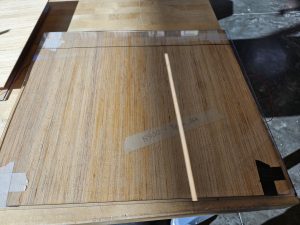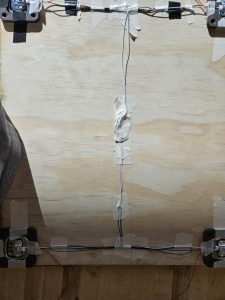This week has been a pretty busy one, with the board being finally assembled, minus the outside of it. I was not expecting many changes to be made this week, such as getting all-new wood for the pads of the board and getting rid of the usage of polycarbonate due to the quality of the polycarbonate pieces. Another change made was to get rid of a portion of the inner walls of the board and replace them with doorstop pads to softly distribute the weight on the board and support the high weights that we expect on the board. One final change I may try to make tomorrow is to use a stack of three batteries instead of the single battery I am using now to significantly increase the battery life.
With that said, we are currently on track to finish everything and present the project. So next week will be the final touches on the board as well as refining a lot of the firmware to make sure the board functions with high accuracy and double checking with some extra testing. Besides this, the other things I plan to complete/work on are the final paper and preparing for the demo day that is coming up. Below, I have attached a photo of the current state of the board with my foot as a reference. The final board will look different from this, though, as the outside tape and rubber have not yet been added.

As said in the team report, I tested the strength and detection of steps on the board. Unfortunately, the original design of the pads was faulty in nicely distributing the weight and had strength issues. This is what led to the new and improved pads made of thicker plywood at around 12mm in thickness each. After this, things performed much better, with complete detection of the weights required and the strength to handle heavy weights and sudden strong forces of steps.







